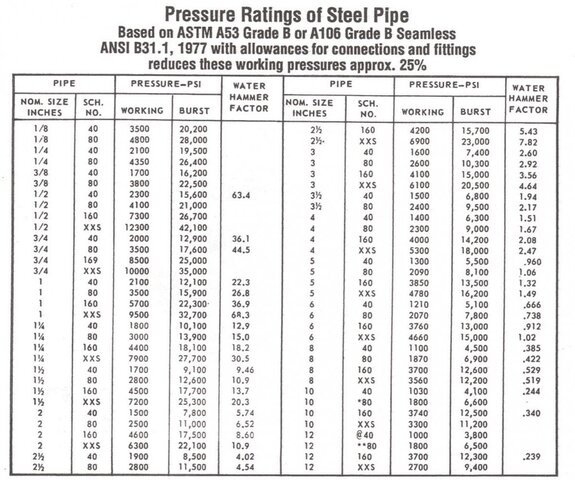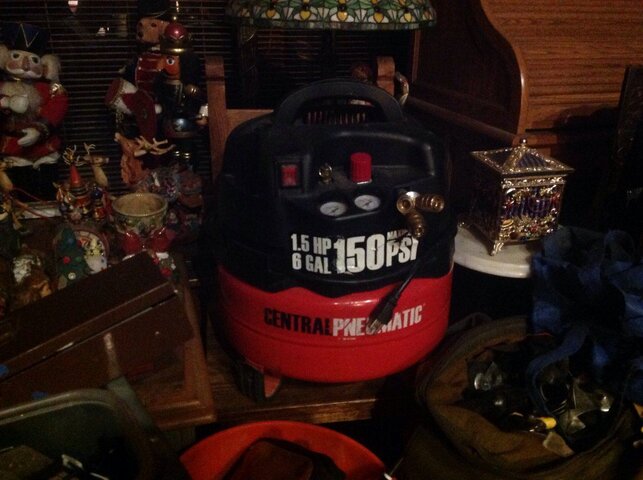I've done this with
PVC it worked well for about 9 months, but the particular application had large swings in pressure that happened rapidly. This flexing of the accumulator walls eventually caused the end cap to fail dramatically. If you do this, over-spec and then over-spec again.
SIDE NOTE: Bimba website is up again. We used
this air reservoir.
@porkchop Brett; within the past year the owners of the home I'm in had our four story building retrofitted with a water filled sprinkler
system. The fitters doing the installation were installing bright yellow
PVC pipe, mostly about 1.5" I.D. with a wall
thickness similar to schedule 40
iron. Me being me, I took interest in the install and struck up a conversation with the senior fitter at all opportunities. I've been involved with the construction of at least 10 commercial buildings but had NEVER seen plastic fire protection water pipe before.
I learned five things of interest:
1; The manufacturer's name and info' as printed repeatedly along the pipe: "Harvel (Reg’d) Blazemaster (Trade
Mark) Sprinkler"
2; There was also a full range of fittings from 22.5 to 90's along with T's, X's, Y's and reducers.
3; The manufacturer's website was VERY specific about how they wanted the pipe cut, chamfered and glued. The chamfering was important to the manufacturer from the POV of increasing the contact area of the adhesive at ALL joints.
4; The manufacturer specified pressure testing with air for a minimum period of time while monitoring the pressure prior to pressure testing with water.
5; From the manufacturer's POV, if there was a leak and loss of pressure with water, the
system could be drained, corrected or added to and re-certified for re-use. If there was a sudden catastrophic
release of air pressure during testing, the manufacturer WOULD
NO LONGER warranty their product. From the manufacturer's perspective: Water could only evacuate the pipe so fast. In their opinion, air could evacuate the pipe much quicker than water leading to infinitesimal cracking and fragmentation not visible to the naked eye. Being a simple construction and maintenance electrician and NEVER a licensed fitter, that's something that had NEVER crossed my mind. Your comments about your
PVC's glue failing brought this back to mind.
Toodleoo!
Ron Hebbard.




